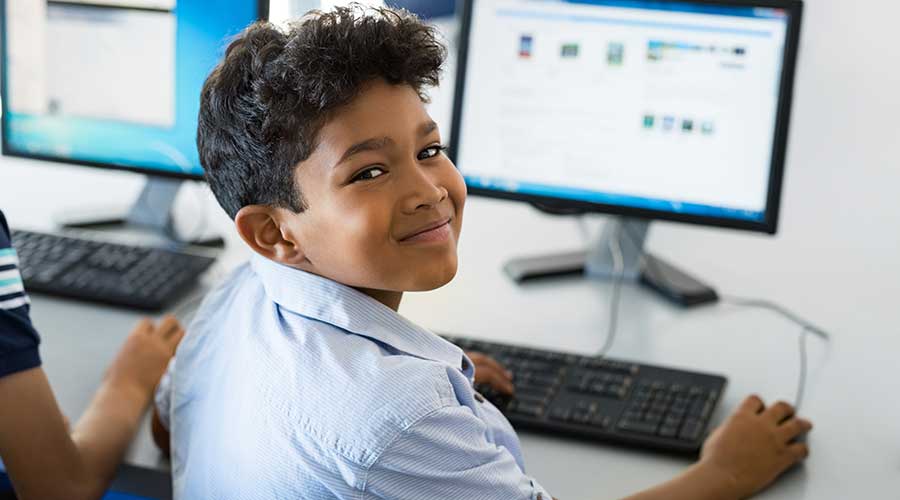As the OSEP Dear Colleague Letter on FAPE indicates, special education is at the core of how schools address the needs of students with disabilities and support them in achieving the annual goals stated in their IEPs as aligned with the state’s academic content standards. Accordingly, how this term is defined in law and implemented in the real world is extremely important to students, families, and schools.
Where “special education” is defined in IDEA
IDEA defines “special education” at 34 CFR §300.39, as follows:
§300.39 Special education.
(a) General. (1) Special education means specially designed instruction, at no cost to the parents, to meet the unique needs of a child with a disability, including—
(i) Instruction conducted in the classroom, in the home, in hospitals and institutions, and in other settings; and
(ii) Instruction in physical education.
(2) Special education includes each of the following, if the services otherwise meet the requirements of paragraph (a)(1) of this section—
(i) Speech-language pathology services, or any other related service, if the service is considered special education rather than a related service under State standards;
(ii) Travel training; and
(iii) Vocational education.
(b) Individual special education terms defined. The terms in this definition are defined as follows:
(1) At no cost means that all specially-designed instruction is provided without charge, but does not preclude incidental fees that are normally charged to nondisabled students or their parents as a part of the regular education program.
(2) Physical education means—
(i) The development of—
(A) Physical and motor fitness;
(B) Fundamental motor skills and patterns; and
(C) Skills in aquatics, dance, and individual and group games and sports (including intramural and lifetime sports); and
(ii) Includes special physical education, adapted physical education, movement education, and motor development.
(3) Specially designed instruction means adapting, as appropriate to the needs of an eligible child under this part, the content, methodology, or delivery of instruction—
(i) To address the unique needs of the child that result from the child’s disability; and
(ii) To ensure access of the child to the general curriculum, so that the child can meet the educational standards within the jurisdiction of the public agency that apply to all children.
(4) Travel training means providing instruction, as appropriate, to children with significant cognitive disabilities, and any other children with disabilities who require this instruction, to enable them to—
(i) Develop an awareness of the environment in which they live; and
(ii) Learn the skills necessary to move effectively and safely from place to place within that environment (e.g., in school, in the home, at work, and in the community).
(5) Vocational education means organized educational programs that are directly related to the preparation of individuals for paid or unpaid employment, or for additional preparation for a career not requiring a baccalaureate or advanced degree.
Key points about “special education”
When you read the Dear Colleague Letter on FAPE, you’ll notice that there are several points made about the nature of “special education.” These include that:
Special education is instruction that is specially designed to meet the unique needs of a child with a disability. The hallmark of special education is that it is individualized for student needs.
Special education is provided at no cost to parents or students.
Special education can be provided in different locations, depending on student needs. IDEA strongly prefers that students receive their special education services in the general education classroom with their nondisabled peers, as you can see by its LRE provisions.
Special education is not a place, however. It’s a set of services, which includes adapting instruction (what’s presented, how it’s presented) to address the unique needs of the child that result from the disability.
Special education isn’t separated from the academic content that students are supposed to learn for their grade. It’s meant to support the learning of that academic content. That’s why IDEA emphasizes that special education needs to ensure that students with disabilities have access to the general curriculum that all students are expected to learn. And that’s why the Dear Colleague Letter on FAPE stresses the importance of aligning a student’s goals in the IEP to the academic content for that student’s enrolled grade.
Special Education, in Brief
Special education is instruction that is specially designed to meet the unique needs of a child with a disability. This means education that is individually developed to address a specific child’s needs that result from his or her disability. Since each child is unique, it is difficult to give an overall example of special education. It is individualized for each child.
Some students may be working at the pre-kindergarten grade level, others at the first, second, or third grade level. There may be students whose special education focuses primarily on speech and language development, cognitive development, or needs related to a physical or learning disability. Special education for any student can consist of:
- an individualized curriculum that is different from that of same-age, nondisabled peers (for example, teaching a blind student to read and write using Braille);
- the same (general) curriculum as that for nondisabled peers, with adaptations or modifications made for the student (for example, teaching 3rd grade math but including the use of counting tools and assistive technology for the student); and
- a combination of these elements.
It is also important to remember that the education, services, and supports outlined in a child’s IEP do not necessarily cover that child’s entire education. The IEP only addresses those educational needs resulting from the child’s disability. If a child needs special education support throughout the school day, for all activities, the IEP will cover all these needs. If the child doesn’t need special education support in one or more areas (for example, physical education, music, or science), then the IEP will not include these subjects. The child accesses them through the general curriculum/ class, with no additional special education services.
Adaptations and Modifications
The individualization of instruction is an important part of special education. Instruction and schoolwork are tailored to the needs of the child. Sometimes a student may need to have changes made in class work or routines because of his or her disability. Modifications can be made to:
- what a child is taught, and/or
- how a child works at school.
Sometimes people get confused about what it means to have a modification and what it means to have an accommodation. Usually a modification means a change in what is being taught to or expected from the student. Making an assignment easier so the student is not doing the same level of work as other students is an example of a modification. An accommodation is a change that helps a student overcome or work around the disability. Allowing a student who has trouble writing to give his answers orally is an example of an accommodation. This student is still expected to know the same material and answer the same questions as fully as the other students, but he doesn’t have to write his answers to show that he knows the information.
What is most important to know about modifications and accommodations is that both are meant to help a child to learn. For example:
Jack is an 8th grade student who has learning disabilities in reading and writing. He is in a regular 8th grade class that is team-taught by a general education teacher and a special education teacher. Modifications and accommodations provided for Jack’s daily school routine (and when he takes state or district-wide tests) include the following:
- Jack will have shorter reading and writing assignments.
- Jack’s textbooks will be based upon the 8th grade curriculum but at his independent reading level (4th grade).
- Jack will have test questions read/explained to him, when he asks.
Modifications or accommodations are most often made in the following areas:
Scheduling. For example:
- giving the student extra time to complete assignments or tests
- breaking up testing over several days
Setting. For example:
- working in a small group
- working one-on-one with the teacher
Materials. For example:
- providing audiotaped lectures or books
- giving copies of teacher’s lecture notes
- using large print books, Braille, or books on CD (digital text)
Instruction. For example:
- reducing the difficulty of assignments
- reducing the reading level
- using a student/peer tutor
Student Response. For example:
- allowing answers to be given orally or dictated
- using a word processor for written work
- using sign language, a communication device, Braille, or native language if it is not English.
Where is special education provided?
Special education instruction can be provided in a number of settings, such as: in the classroom, in the home, in hospitals and institutions, and in other settings (§300.26). Schools must ensure that a continuum of alternative placements is available to meet the needs of children with disabilities. This continuum must include the placements just mentioned (instruction in regular classes, special classes, special schools, home instruction, and instruction in hospitals and institutions). Unless a child’s IEP requires some other arrangement, the child must be educated in the school he or she would attend if he or she did not have a disability [§300.116(c)].
Special education instruction must be provided to students with disabilities in what is known as the least restrictive environment, or LRE. IDEA includes provisions that ensure that children with disabilities are educated with nondisabled children, to the maximum extent appropriate. Each state must also ensure that special classes, separate schooling, or other removal of children with disabilities from the regular educational environment occurs only if the nature or severity of the disability is such that education in regular classes with the use of supplementary aids and services cannot be achieved satisfactorily [§300.114(a)(2)(ii)].
So what does “specially designed instruction” mean?
Given the importance of “specially designed instruction” in the core of special education’s definition, it’s useful to take a closer look at how that term is defined:
(3) Specially designed instruction means adapting, as appropriate to the needs of an eligible child under this part, the content, methodology, or delivery of instruction—
(i) To address the unique needs of the child that result from the child’s disability; and
(ii) To ensure access of the child to the general curriculum, so that the child can meet the educational standards within the jurisdiction of the public agency that apply to all children. [§300.39(b)(3)]
Thus, as part of designing the instruction to fit the needs of a specific child, adaptations may be made in the content, methodology, or delivery of instruction. This is a strong point of pride within the special education field and a considerable accomplishment that’s come from 30 years of practice: the individualization of instruction.
As the provisions above show, adaptations can take many forms in response to the child’s needs; the field is replete with guidance on this critical part of special education.
What’s peer-reviewed research?
Time for another definition–not more from “special education” but, rather, from where this article began–the statement of special education that’s required in the IEP. If you look back up, you’ll see that the special education a child receives must be “based on peer-reviewed research to the extent practicable” [§300.320(a)(4)]. What might that mean?
With the passage of the 2004 Amendments to IDEA, some new terms and concepts became part of the IEP process. One such is peer-reviewed research. The term is not formally defined in the IDEA, but the Department of Education’s discussion in the Analysis of Comments and Changes may be helpful in understanding the term’s general meaning and why no formal definition was included in the regulations:
“Peer-reviewed research” generally refers to research that is reviewed by qualified and independent reviewers to ensure that the quality of the information meets the standards of the field before the research is published. However, there is no single definition of “peer reviewed research”’ because the review process varies depending on the type of information to be reviewed. (71 Fed. Reg. at 46664)
The term is used in conjunction with the phrase “to the extent practicable.” To better understand what this means and how IEP teams are to apply peer-reviewed research in their selection of services to be provided to a child with a disability, you may find the Department of Education’s comments helpful.
States, school districts, and school personnel must…select and use methods that research has shown to be effective, to the extent that methods based on peer-reviewed research are available. This does not mean that the service with the greatest body of research is the service necessarily required for a child to receive FAPE. Likewise, there is nothing in the Act to suggest that the failure of a public agency to provide services based on peer-reviewed research would automatically result in a denial of FAPE. The final decision about the special education and related services, and supplementary aids and services that are to be provided to a child must be made by the child’s IEP Team based on the child’s individual needs. (71 Fed. Reg. at 46665)
The role of states in determining what special education is
This discussion of special education as a term brings to mind how it is also a process, a system. IDEA may define the term and establish rigorous standards for its implementation, but how special education unfolds in schools is very much a state and local matter. Education is traditionally a state responsibility, with each state vested with the authority to determine its own policies within the parameters of federal requirements. This is one reason why it’s so critical to know your state’s specific special education policies and requirements.
For more information on special education in Texas, visit the following resources:
- Texas Education Agency (TEA) webpage on Special Student Populations
- Texas Legal Framework website



